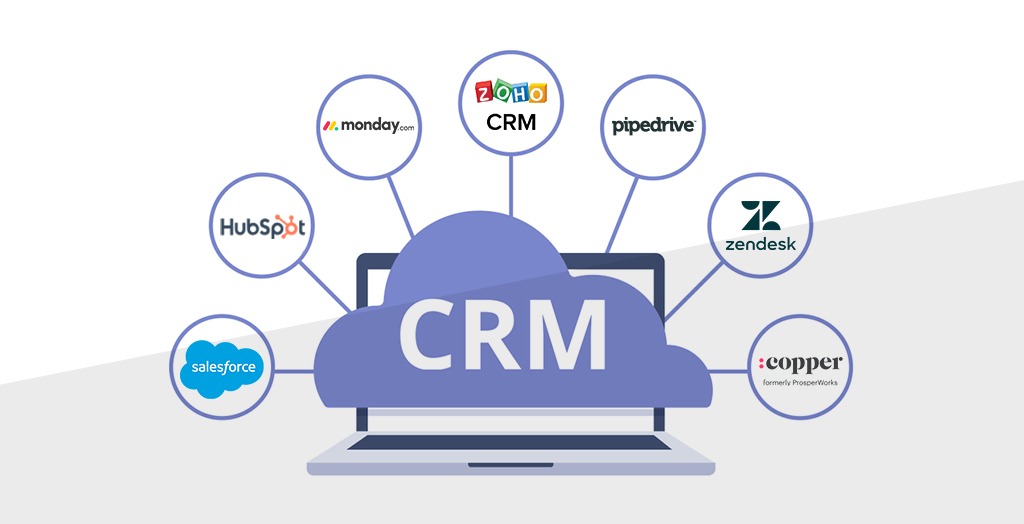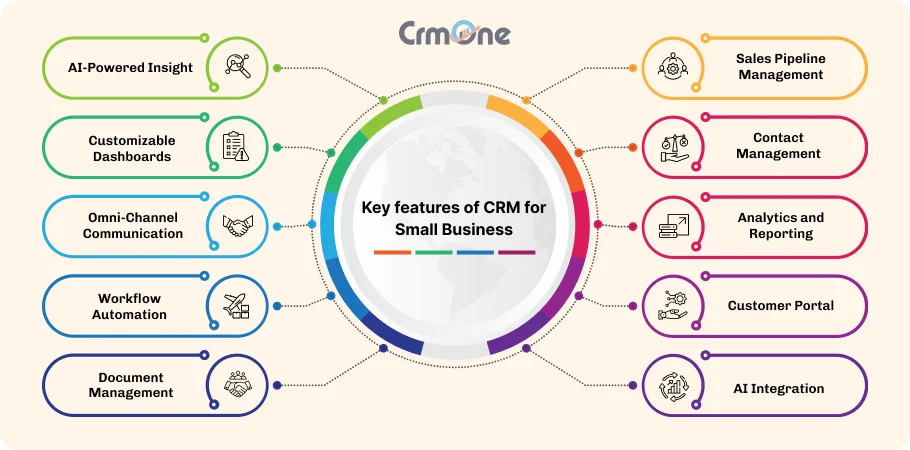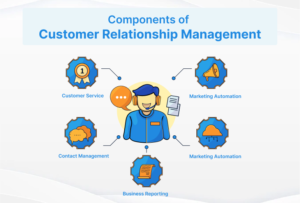Introduction: The Symphony of Customer Loyalty
In the bustling marketplace, where competition is fiercer than ever, the true secret to enduring success isn’t just about acquiring customers; it’s about cultivating their unwavering loyalty. Think of it as a long-term relationship, a partnership built on trust, understanding, and mutual benefit. This is where the magic of Customer Relationship Management (CRM), strategic marketing, and rewarding loyalty programs intertwine, creating a powerful symphony that resonates with customers and drives sustainable growth. But how do you orchestrate this symphony? How do you transform fleeting transactions into lasting bonds?
This comprehensive guide will delve deep into the interconnected worlds of CRM, marketing, and loyalty rewards, providing you with the knowledge and strategies needed to build a loyal customer base that not only stays with you but also actively champions your brand. We’ll explore the nuances of each element, examining their individual strengths and how they amplify each other when working in harmony. Get ready to embark on a journey that will transform the way you think about your customers and how you build relationships with them.
Chapter 1: Understanding the Cornerstone – CRM
At the heart of any successful customer loyalty strategy lies a robust CRM system. Think of CRM as the central nervous system of your customer interactions. It’s where you gather, organize, and analyze all the crucial information about your customers – their preferences, purchase history, communication logs, and much more. Without a solid CRM foundation, you’re essentially trying to build a skyscraper on sand. It just won’t last.
What is CRM?
CRM, or Customer Relationship Management, is more than just software; it’s a philosophy. It’s a customer-centric approach to business that prioritizes building and nurturing strong relationships with your customers. The CRM system itself is the technology that enables this philosophy. It provides a centralized hub for all customer-related data, allowing you to:
- Track Interactions: Record every interaction with a customer, from initial inquiries to support tickets and purchase history.
- Segment Customers: Divide your customer base into distinct groups based on demographics, behavior, and preferences.
- Personalize Communication: Tailor your marketing messages and offers to resonate with individual customer needs.
- Automate Tasks: Streamline routine tasks like email marketing, appointment scheduling, and lead nurturing.
- Analyze Data: Gain insights into customer behavior, identify trends, and measure the effectiveness of your marketing efforts.
Benefits of a Strong CRM System
Investing in a well-implemented CRM system yields a multitude of benefits:
- Improved Customer Satisfaction: By understanding your customers better, you can provide more personalized and relevant experiences, leading to higher satisfaction levels.
- Increased Sales and Revenue: CRM enables you to identify and target high-potential leads, nurture them through the sales funnel, and ultimately close more deals.
- Enhanced Customer Retention: By proactively engaging with customers and addressing their needs, you can build stronger relationships and reduce churn.
- Streamlined Operations: Automation features within CRM can free up your team’s time and allow them to focus on more strategic tasks.
- Better Decision-Making: Data-driven insights from your CRM system empower you to make informed decisions about your marketing, sales, and customer service strategies.
Choosing the Right CRM System
The market is flooded with CRM solutions, each with its own strengths and weaknesses. Choosing the right one for your business is crucial. Consider the following factors:
- Your Business Needs: What are your specific requirements? Do you need robust sales automation features, extensive marketing capabilities, or comprehensive customer service tools?
- Scalability: Can the system grow with your business? Will it be able to handle an increasing number of customers and data?
- Integration: Does it integrate seamlessly with your existing systems, such as your website, email marketing platform, and accounting software?
- Ease of Use: Is the system user-friendly and intuitive? Will your team be able to adopt it quickly and effectively?
- Cost: Consider the pricing model, including upfront costs, ongoing subscription fees, and potential implementation expenses.
Popular CRM platforms include Salesforce, HubSpot CRM, Zoho CRM, and Microsoft Dynamics 365, among others. Researching and comparing different options is essential to finding the perfect fit for your specific needs.
Chapter 2: The Art of Marketing in the CRM Era
Once you have a solid CRM foundation in place, it’s time to unleash the power of marketing. But this isn’t your grandfather’s marketing. In the age of CRM, marketing is no longer about blasting generic messages to a broad audience. It’s about building targeted, personalized experiences that resonate with individual customers. It’s about understanding their needs, anticipating their desires, and delivering value at every touchpoint.
The Evolution of Marketing
Marketing has undergone a dramatic transformation in recent years. Traditional, outbound marketing methods, such as print advertising and mass email blasts, are becoming less effective. Consumers are bombarded with marketing messages daily, and they’re increasingly adept at tuning out irrelevant noise. The focus has shifted towards inbound marketing, which involves attracting customers through valuable content and experiences.
Here’s a glimpse into the evolution:
- Traditional Marketing: Focus on mass media, limited targeting, and a one-size-fits-all approach.
- Digital Marketing: Leverages the internet and digital channels, allowing for more targeted campaigns and data-driven insights.
- CRM-Powered Marketing: Leverages CRM data to personalize customer interactions, automate marketing processes, and build long-term relationships.
Key Marketing Strategies for CRM
Integrating your marketing efforts with your CRM system unlocks a wealth of opportunities. Here are some key strategies:
- Segmentation and Targeting: Use your CRM data to segment your customer base into meaningful groups. Then, tailor your marketing messages and offers to resonate with each segment’s specific needs and interests.
- Personalized Email Marketing: Send personalized emails that are relevant to each customer’s past purchases, browsing history, and preferences. Use dynamic content to create truly unique experiences.
- Lead Nurturing: Guide potential customers through the sales funnel with a series of automated emails and targeted content.
- Marketing Automation: Automate repetitive marketing tasks, such as sending welcome emails, following up on leads, and scheduling social media posts.
- Customer Journey Mapping: Understand the different stages of your customer’s journey and create content and experiences that address their needs at each stage.
- Content Marketing: Create valuable and engaging content, such as blog posts, videos, and infographics, to attract and retain customers.
- Social Media Marketing: Use social media to connect with your customers, build brand awareness, and drive traffic to your website.
Measuring Marketing Success
In the CRM era, it’s more important than ever to measure the effectiveness of your marketing efforts. Your CRM system provides valuable data that allows you to track key metrics, such as:
- Conversion Rates: How many leads are converting into customers?
- Customer Acquisition Cost (CAC): How much does it cost to acquire a new customer?
- Customer Lifetime Value (CLTV): What is the average revenue generated by a customer over their relationship with your business?
- Return on Investment (ROI): What is the return on your marketing investments?
- Website Traffic and Engagement: How many visitors are coming to your website, and how are they interacting with your content?
By tracking these metrics, you can identify what’s working and what’s not, allowing you to optimize your marketing strategies and maximize your ROI.
Chapter 3: The Power of Loyalty Rewards
Loyalty rewards programs are a cornerstone of customer retention. They’re a proven way to incentivize repeat purchases, build brand advocacy, and foster a deeper connection with your customers. But simply offering a discount or a freebie isn’t enough. A successful loyalty program is designed with your customers’ needs and preferences in mind.
Why Loyalty Programs Work
Loyalty programs tap into fundamental human desires, such as the desire for recognition, belonging, and value. They provide customers with:
- Incentives to Return: Rewards programs offer tangible benefits, such as discounts, free products, or exclusive access, that encourage customers to choose your business over the competition.
- A Sense of Belonging: Loyalty programs create a sense of community and belonging, making customers feel valued and appreciated.
- Personalized Experiences: Well-designed loyalty programs offer personalized rewards and experiences that resonate with individual customer preferences.
- Increased Customer Lifetime Value: Loyal customers spend more, visit more often, and are more likely to recommend your business to others, leading to a higher CLTV.
Types of Loyalty Programs
There are many different types of loyalty programs, each with its own strengths and weaknesses. The best choice for your business will depend on your industry, target audience, and business goals.
- Points-Based Programs: Customers earn points for every purchase, which they can redeem for rewards.
- Tiered Programs: Customers are assigned to different tiers based on their spending or engagement, with higher tiers receiving more valuable rewards.
- Cash-Back Programs: Customers earn a percentage of their purchases back in cash or store credit.
- Subscription Programs: Customers pay a recurring fee to receive exclusive benefits, such as discounts, free shipping, or early access to products.
- Gamified Programs: Customers earn rewards by completing challenges, earning badges, or participating in contests.
Key Elements of a Successful Loyalty Program
Creating a successful loyalty program requires careful planning and execution. Here are some key elements to consider:
- Clear and Simple Rules: The program rules should be easy to understand and follow. Avoid complex point systems or confusing redemption processes.
- Relevant and Desirable Rewards: Offer rewards that are valuable to your customers. Consider their preferences and needs.
- Personalization: Tailor the program to individual customer preferences and behaviors.
- Easy Enrollment: Make it easy for customers to join the program.
- Seamless Integration with CRM: Integrate your loyalty program with your CRM system to track customer activity, personalize rewards, and measure program effectiveness.
- Regular Communication: Keep your customers informed about their points, rewards, and exclusive offers.
- Mobile Accessibility: Offer a mobile app or a mobile-friendly website so customers can easily access their rewards and track their progress.
Chapter 4: Integrating CRM, Marketing, and Loyalty Rewards
The true power of these three elements – CRM, marketing, and loyalty rewards – lies in their integration. When they work together seamlessly, they create a virtuous cycle of customer engagement, loyalty, and growth. This integration allows you to:
- Personalize Customer Experiences: Use CRM data to personalize your marketing messages, offers, and loyalty rewards.
- Automate Processes: Automate marketing tasks, such as sending triggered emails, rewarding customers for their purchases, and tracking their progress in the loyalty program.
- Measure Results: Track the effectiveness of your marketing campaigns and loyalty program using data from your CRM system.
- Improve Customer Service: Provide better customer service by having all customer information in one place.
Steps to Integration
Here are some steps to integrate these three elements:
- Choose the Right Tools: Select CRM, marketing automation, and loyalty program software that integrate seamlessly with each other.
- Define Your Goals: Determine your specific goals for the integration. What do you want to achieve?
- Map Your Customer Journey: Understand the different stages of your customer’s journey and how they interact with your brand.
- Segment Your Customer Base: Use CRM data to segment your customer base into meaningful groups.
- Personalize Your Marketing Messages: Tailor your marketing messages to resonate with each segment’s specific needs and interests.
- Automate Your Workflows: Automate tasks, such as sending welcome emails, following up on leads, and rewarding customers for their purchases.
- Track Your Results: Track the effectiveness of your marketing campaigns and loyalty program using data from your CRM system.
Examples of Integration
Here are some examples of how these three elements can be integrated:
- Personalized Email Campaigns: Send personalized email campaigns to customers based on their purchase history, browsing history, and preferences.
- Automated Loyalty Rewards: Automatically reward customers for their purchases, referrals, or other actions.
- Targeted Advertising: Target advertising campaigns to specific customer segments based on their behavior and demographics.
- Customer Service Personalization: Provide better customer service by having all customer information in one place, including their purchase history, support tickets, and loyalty points.
Chapter 5: Measuring and Optimizing Your Efforts
The journey to customer loyalty is a continuous process of measurement and optimization. It’s not enough to simply implement these strategies; you must constantly monitor their effectiveness, identify areas for improvement, and adapt your approach as needed. Data is your compass, guiding you toward the most effective strategies.
Key Metrics to Track
Your CRM system is a treasure trove of data. Here are some key metrics to track to measure the success of your CRM, marketing, and loyalty programs:
- Customer Acquisition Cost (CAC): How much does it cost to acquire a new customer?
- Customer Lifetime Value (CLTV): What is the average revenue generated by a customer over their relationship with your business?
- Customer Retention Rate: What percentage of your customers are returning to your business?
- Churn Rate: What percentage of your customers are leaving your business?
- Conversion Rates: How many leads are converting into customers?
- Website Traffic and Engagement: How many visitors are coming to your website, and how are they interacting with your content?
- Email Open and Click-Through Rates: How many people are opening and clicking on your emails?
- Loyalty Program Participation: How many customers are participating in your loyalty program?
- Loyalty Program Redemption Rates: How often are customers redeeming their rewards?
- Net Promoter Score (NPS): How likely are your customers to recommend your business to others?
Analyzing the Data
Once you’ve collected the data, it’s time to analyze it. Look for trends, patterns, and insights. Identify what’s working well and what’s not. Compare your results to industry benchmarks and your own historical data. Use these insights to make data-driven decisions about your strategies.
Optimizing Your Strategies
Based on your data analysis, make adjustments to your strategies. This might involve:
- Refining Your Customer Segmentation: Are your customer segments accurate? Are you targeting the right customers with the right messages?
- Personalizing Your Marketing Messages: Are your marketing messages truly personalized? Are they relevant to each customer’s needs and interests?
- Adjusting Your Loyalty Program: Are your rewards valuable to your customers? Are the rules of your program clear and easy to understand?
- Testing Different Approaches: Experiment with different marketing messages, offers, and loyalty program features to see what resonates best with your customers.
- Staying Agile: The marketplace is constantly evolving. Be prepared to adapt your strategies as needed to keep pace with changes in customer behavior and industry trends.
Chapter 6: Case Studies: Real-World Examples of Success
Let’s explore some real-world examples of businesses that have successfully integrated CRM, marketing, and loyalty rewards to build strong customer relationships:
Example 1: Starbucks
Starbucks is a master of customer loyalty. Their mobile app allows customers to earn stars (points) for every purchase, which they can redeem for free drinks and food. The app also provides personalized offers and recommendations based on customer preferences. Starbucks leverages its CRM data to understand customer behavior and tailor its marketing efforts accordingly. They offer personalized promotions based on past purchases and location. This integrated approach has helped Starbucks create a loyal customer base and drive significant revenue growth.
Example 2: Sephora
Sephora’s Beauty Insider program is another excellent example of a successful loyalty program. Customers earn points for every purchase, which they can redeem for exclusive products, samples, and experiences. Sephora uses its CRM system to track customer preferences and provide personalized recommendations. They also offer personalized email marketing campaigns and targeted advertising. This integrated approach has helped Sephora build a strong brand and drive customer loyalty.
Example 3: Amazon
Amazon Prime is a prime example of a subscription-based loyalty program. Members receive exclusive benefits, such as free shipping, access to streaming video and music, and early access to deals. Amazon uses its CRM system to track customer behavior and personalize its marketing efforts. They offer personalized recommendations, targeted advertising, and exclusive deals to Prime members. This integrated approach has helped Amazon build a massive customer base and dominate the e-commerce market.
Chapter 7: The Future of Customer Loyalty
The landscape of customer loyalty is constantly evolving. As technology advances and customer expectations rise, businesses must adapt and innovate to stay ahead of the curve. Here are some trends to watch:
- Artificial Intelligence (AI): AI will play an increasingly important role in customer relationship management. AI-powered chatbots can provide instant customer service, while AI-driven analytics can help businesses personalize their marketing efforts and predict customer behavior.
- Personalization at Scale: Customers expect personalized experiences. Businesses will need to leverage data and technology to deliver highly personalized messages, offers, and recommendations.
- Mobile-First Strategies: Mobile devices are the primary way that many customers interact with businesses. Businesses will need to focus on mobile-first strategies to provide seamless customer experiences.
- Gamification: Gamification, the application of game-design elements in non-game contexts, will become more prevalent in loyalty programs. Businesses will use gamification to engage customers, incentivize desired behaviors, and create a sense of fun and competition.
- Data Privacy and Security: As businesses collect more customer data, data privacy and security will become increasingly important. Businesses will need to prioritize data privacy and security to build trust with their customers.
- Focus on Experience: Customers are increasingly valuing experiences over products. Businesses will need to focus on creating memorable and engaging customer experiences.
Conclusion: Building a Lasting Legacy
Building customer loyalty is not a destination; it’s a journey. It requires a deep understanding of your customers, a commitment to providing exceptional experiences, and a willingness to adapt and evolve. By integrating CRM, marketing, and loyalty rewards, you can create a powerful engine for customer engagement, retention, and growth. The journey may be challenging, but the rewards – a loyal customer base, increased revenue, and a lasting legacy – are well worth the effort.
Embrace the power of data, personalize every interaction, and never stop striving to exceed your customers’ expectations. The future of your business depends on it.


